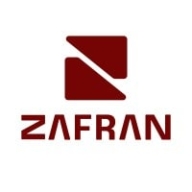


Tanium and Microsoft Defender Vulnerability Management both compete in the cybersecurity market, specifically in vulnerability management and endpoint protection. Microsoft Defender has the upper hand due to its seamless integration with the Microsoft ecosystem, advanced threat intelligence, and comprehensive security features.
Features: Tanium provides real-time visibility and control over large networks. It excels in patch management, threat hunting, and incident response. Microsoft Defender stands out for its integration with the Microsoft ecosystem, asset discovery, and automated vulnerability assessments.
Room for Improvement: Tanium could enhance its deployment simplicity and expand integrations beyond its current capabilities. Additionally, its user interface might benefit from increased intuitiveness. Microsoft Defender could improve its threat intelligence without requiring additional purchases and enhance customer understanding of its vast capabilities. It might also streamline workflows and enhance configuration flexibility.
Ease of Deployment and Customer Service: Tanium's deployment process is extensive, requiring dedicated resources for full utilization. It provides intensive customer service. Microsoft Defender offers streamlined deployment, especially for organizations within the Microsoft environment, and accessible customer support due to its integration with existing protocols.
Pricing and ROI: Tanium incurs a higher initial investment but offers notable returns through comprehensive threat management and high control features. Microsoft Defender provides a cost-efficient solution with strong ROI, benefiting from its lower setup costs and seamless integration in the Microsoft ecosystem.
| Product | Market Share (%) |
|---|---|
| Microsoft Defender Vulnerability Management | 2.7% |
| Zafran Security | 1.0% |
| Tanium | 2.6% |
| Other | 93.7% |



| Company Size | Count |
|---|---|
| Small Business | 9 |
| Midsize Enterprise | 2 |
| Large Enterprise | 5 |
| Company Size | Count |
|---|---|
| Small Business | 5 |
| Midsize Enterprise | 3 |
| Large Enterprise | 11 |
Zafran Security integrates with existing security tools to identify and mitigate vulnerabilities effectively, proving that most critical vulnerabilities are not exploitable, optimizing threat management.
Zafran Security introduces an innovative operating model for managing security threats and vulnerabilities. By leveraging the threat exposure management platform, it pinpoints and prioritizes exploitable vulnerabilities, reducing risk through immediate remediation. This platform enhances your hybrid cloud security by normalizing vulnerability signals and integrating specific IT context data, such as CVE runtime presence and internet asset reachability, into its analysis. No longer reliant on patch windows, Zafran Security allows you to manage risks actively.
What are the key features of Zafran Security?
What benefits can users expect from Zafran Security?
In industries where security is paramount, such as finance and healthcare, Zafran Security provides invaluable protection by ensuring that only exploitable vulnerabilities are addressed. It allows entities to maintain robust security measures while allocating resources efficiently, fitting seamlessly into existing security strategies.
Microsoft Defender Vulnerability Management enables organizations to identify vulnerabilities, manage patches, and fortify threat detection. It offers endpoint assessments, cloud incident management, and dynamic security through Microsoft's Security Scorecard integration.
Organizations leverage Microsoft Defender Vulnerability Management for advanced threat detection and response. It provides robust tools for vulnerability assessment and cloud incident management, integrated with Microsoft's Security Scorecard to enhance dynamic security profiling. Key features include automatic patch deployment, security configuration management, and seamless integration with Microsoft platforms, benefiting both on-prem and cloud environments. Organizations can track vulnerabilities with severity-based reports, helping manage outdated software and minimizing threat exposure.
What are the key features of Microsoft Defender Vulnerability Management?In healthcare, Microsoft Defender Vulnerability Management helps manage compliance with health regulations, while in finance, it aids in securing sensitive data from cyber threats. Manufacturing sectors benefit from its patch management, keeping operational technology systems less vulnerable to disruptions.
Tanium offers robust endpoint protection, patching, and inventory management, consolidating the functions of tools like BigFix with capabilities in incident response, network security, and cloud or on-premise deployments.
Known for real-time capabilities, Tanium provides detailed analytics, security features, and device management. Users benefit from quick implementation, real-time updates, and patching campaigns. Despite its strengths, integration and custom plugin expansion remain areas to improve, along with data visualization and network optimization. Reporting enhancements and user training could advance its usability, and some UI elements may require updates for clarity and security.
What are the essential features of Tanium?Tanium's deployment spans industries focusing on endpoint protection and compliance, ensuring reliable device and server management in settings where safety and quick adaptation are critical. Organizations use it for application deployment, compliance checks, and integrating it as an EDR solution, enhancing overall security and operational efficiencies.
We monitor all Vulnerability Management reviews to prevent fraudulent reviews and keep review quality high. We do not post reviews by company employees or direct competitors. We validate each review for authenticity via cross-reference with LinkedIn, and personal follow-up with the reviewer when necessary.